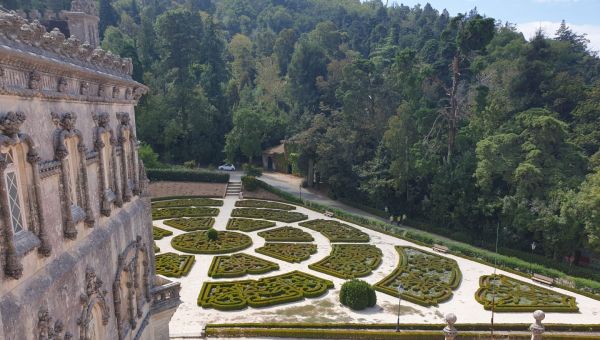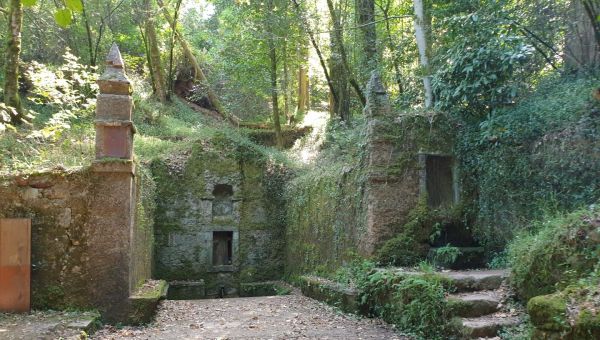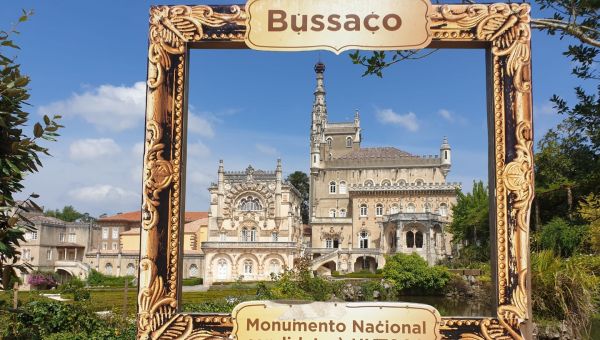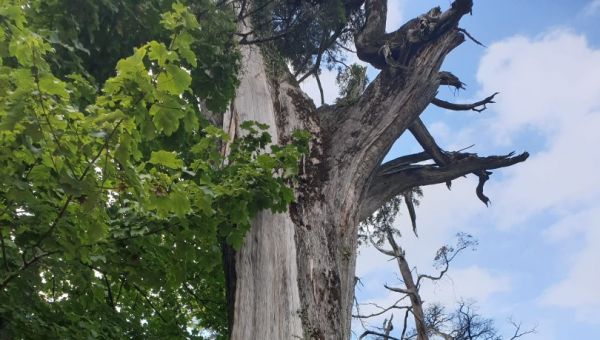Located in the parish of Luso, Serra do Buçaco is 549 metres above sea level and is a precious gem in the municipality of Mealhada. Due to its altitude and green environment, Serra do Buçaco is known for its rain showers and has frequent fogs, which gives it an even more mysterious ambiance in the forest, along with the lakes and fountains scattered around Buçaco.
If I had to describe Mata do Buçaco in a few words, I would say that it is a place full of history where you can breathe nature. In terms of history, the first monument you will see is the Santa Cruz Convent, which was built by the Order of Descaled Carmelites in the 17th century when the monks of the Order of Descaled Carmelites settled there in 1628. At that time, they planted a large forest we know today as Mata do Buçaco.
Arriving at Mata do Buçaco, you will have more than one option to get in. You can enter on foot for free, or by car for €5 or motorcycle for €2. I got in my car and parked inside the Mata do Buçaco next to the palace, where there is also a cafe and a small souvenir shop.
My tour started with a breakfast that looked like brunch and then I went to visit the chapel, which in my opinion, although it can be seen quickly, is interesting for those who like to see religious and ancient artifacts.
Staying in a monument
It is a story of kings and queens that began a long time ago between 1888 and 1907 when King Carlos I built a palace that would be one of the last palaces of the Portuguese Monarchy. There are currently no kings and queens in Portugal, but anyone can feel like one and stay there for a few days, as this palace is now a famous five-star hotel.
By the way, the palace and its beautiful gardens are the main attraction of Serra do Buçaco, making you feel like you are in a fairy tale. Take the opportunity to take some pictures and contemplate this wonder.
Buçaco
Walking around this green gem
Due to its important flora and fauna, Serra do Buçaco is a protected area. In fact, it has many different and special plant species from all over the world, some of them huge, such as the Buçaco cedar (Cupressus lusitanica), one of the interesting points to visit highlighted by the map. In fact, for those who like plants, this is an opportunity to explore and experience several different species - all are tagged.
The forest has six trails with various fountains and lakes spanning over 100 hectares. In addition to seeing the places the map highlights, it's always good to find others for yourself. In our case, we have managed to found a beautiful viewpoint at the top of Serra do Buçaco from where we were able to see the whole park that wasn’t marked.
One of the trails is the Via Sacra Trail, which has 20 chapels along a three-kilometre route. This path represents the steps of the Passion of Christ. Then you will also find the Caminho das Águas, where the famous Fonte Fria is located.
In addition, there are many more monuments, iconic trees, viewpoints and many other types of interesting places to visit and exercise your legs as most of them are far apart. Some of the main points are Fonte Fria and Vale dos Fetos, Portas de Coimbra, Portas da Rainha and Cruz Alta.
The region is mainly composed of very different trees and plant species with more than a thousand species, being a place of relaxation and contemplation of nature.
Another place worth visiting is the Obelisco, which is a monument located outside the Mata do Buçaco that commemorates the Battle of Buçaco. Every year there are celebrations during the summer around this monument.
Although Serra do Buçaco has several emblematic spots and trails, if you're not careful you'll probably get lost quickly, walking around without seeing anything. Therefore, I suggest that you ask for a map when you arrive and check out all the places you want to go to before for an organised visit, as the points are a little far away from each other.
Historical background
Buçaco played a very important role during the war caused by French invasions. It was a very bloody war, in which the Portuguese army counted on the help of the British to get the French army out and regain stability in Portuguese territory.
Portugal was attacked three times by the army commanded by Napoleon Bonaparte: in November 1807 (start of the first invasion commanded by General Junot), in March 1809 (second invasion commanded by General Soult) and in June 1810 (third invasion commanded by Marshal Massena)
In the last invasion, the Anglo-Portuguese army, with about 50,000 men, took advantage of the mountainous geography of the Buçaco forest and managed to resist the enemy.
If you want to know more about that time, there is a Buçaco Military Museum where these two centuries old stories are told.
Buçaco
Paula Martins is a fully qualified journalist, who finds writing a means of self-expression. She studied Journalism and Communication at University of Coimbra and recently Law in the Algarve. Press card: 8252


















